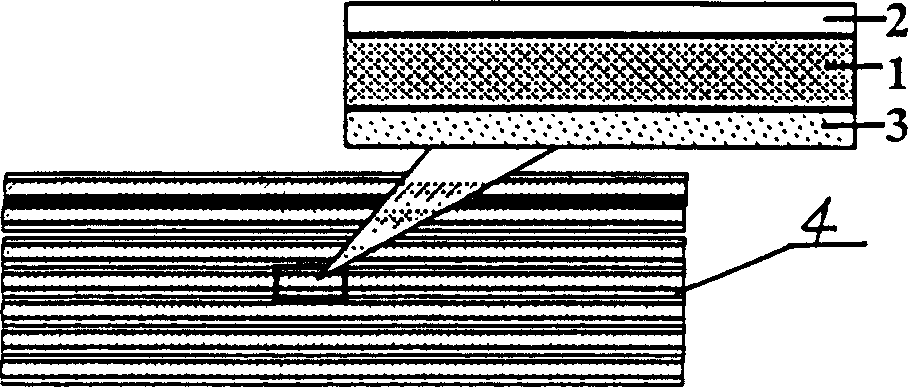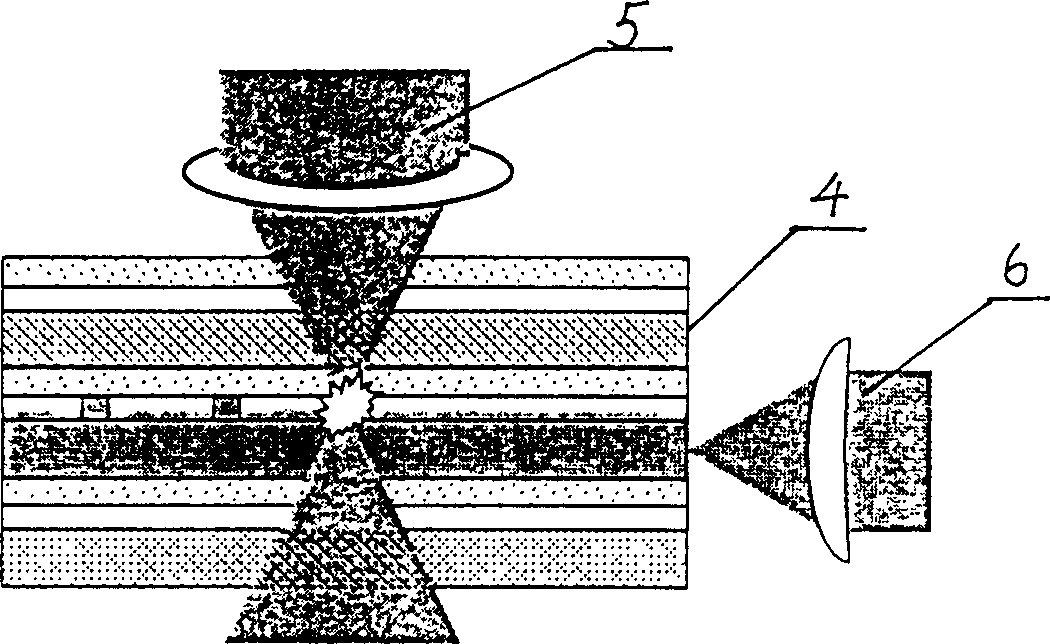Laminated optical waveguide 3D data memory and its duble-beam record and read-out method
A three-dimensional data and memory technology, applied in the field of optical information storage, can solve the problems of limiting the number of data readouts, and achieve the effects of eliminating the limitation of repeated data readout times, high sensitivity, and suppressing interlayer crosstalk effects
- Summary
- Abstract
- Description
- Claims
- Application Information
AI Technical Summary
Problems solved by technology
Method used
Image
Examples
Embodiment Construction
[0022] The memory unit is composed of multiple planar optical waveguides, and each waveguide is composed of a core layer, a cladding layer and a substrate, and the refractive indices are n 1 , n 2 and n 3 . If the refractive index of the core, cladding and substrate satisfies the condition n 1 >n 2 ≥n 3 , the light will be totally reflected on the cladding-core and core-substrate interfaces, the light beam will be confined in each waveguide, and the propagation of light will not be visible from the direction perpendicular to the waveguide surface. The cladding layer of each waveguide is made of photosensitive material, which is used as a recording layer to store data; the core layer is made of non-photosensitive material, which is used as an addressing layer to conduct addressing beams; the substrate is also made of non-photosensitive material, As an isolation layer, it can prevent double-sided leakage and eliminate interlayer crosstalk during data recording and readout. ...
PUM
 Login to View More
Login to View More Abstract
Description
Claims
Application Information
 Login to View More
Login to View More - R&D
- Intellectual Property
- Life Sciences
- Materials
- Tech Scout
- Unparalleled Data Quality
- Higher Quality Content
- 60% Fewer Hallucinations
Browse by: Latest US Patents, China's latest patents, Technical Efficacy Thesaurus, Application Domain, Technology Topic, Popular Technical Reports.
© 2025 PatSnap. All rights reserved.Legal|Privacy policy|Modern Slavery Act Transparency Statement|Sitemap|About US| Contact US: help@patsnap.com



